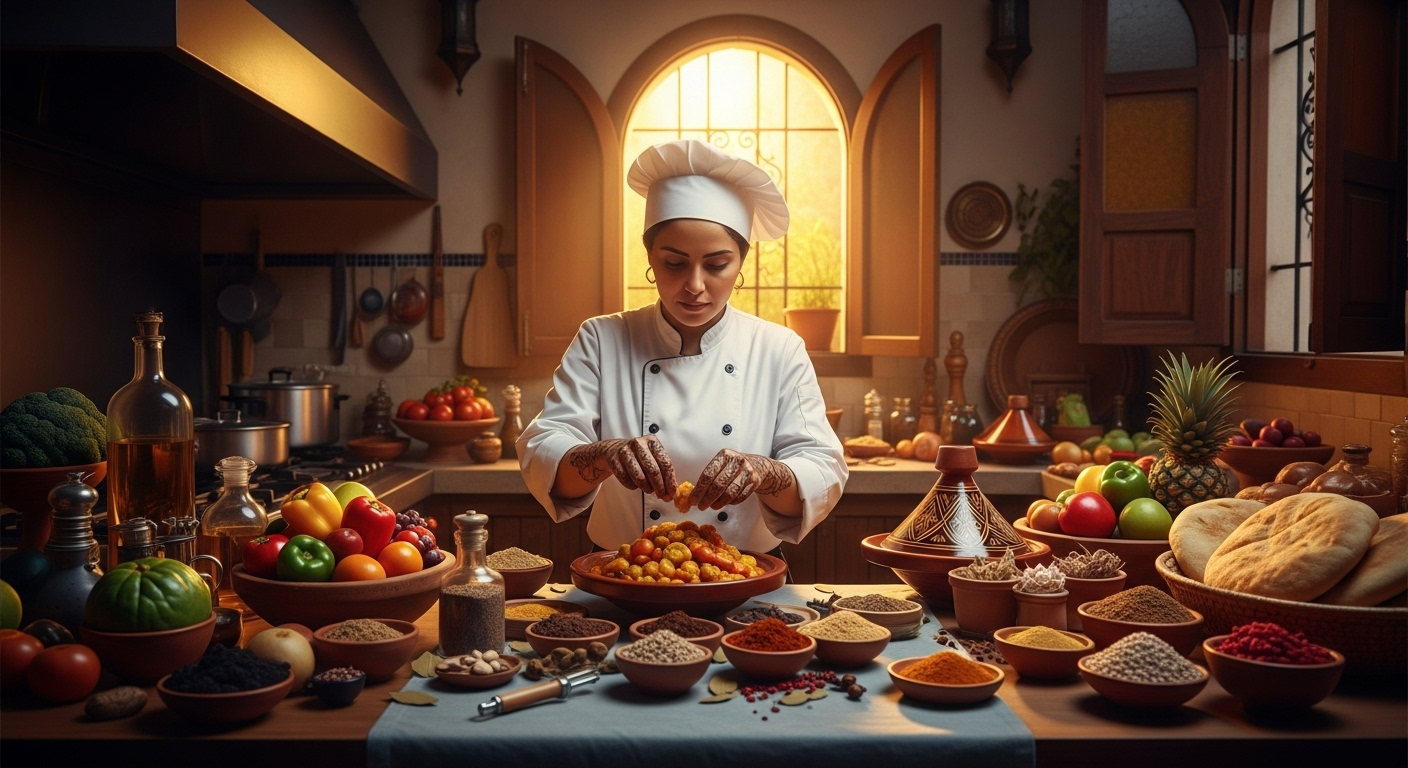Discovering the Vibrancy of Moroccan Cuisine: A Foodie's Guide
Moroccan cuisine is a tantalizing fusion of Mediterranean, Arabic, and Berber culinary traditions, enriched by flavors from sub-Saharan Africa, Persia, and Andalusia. With its distinct spices, varied textures, and mouthwatering flavors, it is an undiscovered gem for many food enthusiasts. Let's journey through this vibrant culinary landscape, exploring its rich history, popular dishes, innovative creations, and the unique dining traditions that make Moroccan cuisine truly special.

The History of Moroccan Cuisine: A Melting Pot of Cultures
The diversity of Moroccan cuisine reflects the nation’s complex and rich history. Its strategic location has made it a crossroads for many civilizations, and each has left their mark on the country’s food. The indigenous Berber tribes introduced staples such as couscous and tagine. The Romans brought olives and olive oil, while the Arabs introduced spices like saffron, cinnamon, and ginger. The influence of the French colonial period is still visible in the use of pastries, coffee, and wine in Moroccan cuisine.
Iconic Moroccan Delicacies: Beyond Couscous and Tagine
While couscous and tagine are the most well-known Moroccan dishes, the country’s culinary repertoire is much broader. Pastilla, a savory-sweet pie made with layers of crisp phyllo dough, spiced meat, and dusted with sugar and cinnamon, is a must-try. Harira, a hearty soup of tomatoes, lentils, chickpeas, and lamb, is a comforting staple during Ramadan. Don’t miss out on the variety of Moroccan salads, made with fresh, locally-grown vegetables, and the sweet delights of Moroccan pastries like chebakia and gazelle horns.
Moroccan Cuisine Innovations: Fusion and Creativity
Inventive chefs are breathing new life into traditional Moroccan dishes, creating fusion food that combines age-old recipes with modern gastronomy. Think tagine with a twist, like a tagine cooked with quinoa or couscous served with a side of avocado and pomegranate salsa. They’re also experimenting with unique flavor combinations, like infusing saffron into ice cream or adding preserved lemon to cocktails.
Dining Moroccan Style: A Unique Experience
Eating Moroccan food is about more than just the dishes; it’s a sensory experience. Meals are often shared family-style, promoting a sense of community. Traditional Moroccan dining etiquette includes washing hands before and after the meal, eating with the right hand, and taking food from the part of the communal dish closest to you.
Moroccan Food Tips and Highlights
-
Consider trying a Moroccan cooking class or food tour to experience the cuisine firsthand.
-
Moroccan mint tea is a must-try. It’s a symbol of hospitality and is usually offered to guests.
-
Bread is a staple in every meal and is often used as a utensil to scoop up food.
-
Moroccan cuisine uses a unique blend of spices called ras el hanout, which can have up to 30 different spices.
-
Morocco is famous for its street food, particularly in cities like Marrakech and Fez.
The exploration of Moroccan cuisine offers a window into the country’s rich history and cultural diversity. It’s a culinary journey that promises to awaken your senses, leaving you with a deeper appreciation of this vibrant and diverse culinary tradition. So next time you’re in the mood for a culinary adventure, consider diving into the flavorful world of Moroccan cuisine.





